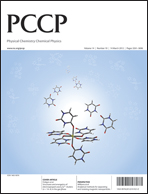The properties of photo-generated reactive species, holes and electrons in bulk TiO2 (anatase) film and nano-sized TiO2 were studied and their effects towards decomposing pollutant dye methyl orange (MO) were compared by transient absorption spectroscopies. The recombination of holes and electrons in nano-sized TiO2 was found to be on the microsecond time scale consistent with previous reports in the literature. However, in bulk TiO2 film, the holes and electrons were found to be on the order of picoseconds due to ultra fast free electrons. The time-correlated single-photon counting (TCSPC) technique combined with confocal fluorescence microscopy revealed that the fluorescence intensity of MO is at first enhanced noticeably by TiO2 under UV excitation and soon afterwards weakened dramatically, with the lifetime prolonged. Photo-generated holes in nano-sized TiO2 can directly oxidize MO on the time scale of nanoseconds, while free electrons photo-generated in bulk TiO2 film can directly inject into MO on the order of picoseconds. Through cyclic voltammetry measurements, it was found that MO can be reduced at −0.28 V and oxidized at 1.4 V (vs.SCE) and this provides thermodynamic evidence for MO to be degraded by electrons and holes in TiO2. Through comparison of the hole-scavenging effect of MO and water, it was found that in polluted water when MO is above 1.6 × 10−4 M, the degradation is mainly due to a direct hole oxidation process, while below 1.6 × 10−4 M, hydroxyl oxidation competes strongly and might exceed the hole oxidation.

You have access to this article
 Please wait while we load your content...
Something went wrong. Try again?
Please wait while we load your content...
Something went wrong. Try again?


 Please wait while we load your content...
Please wait while we load your content...